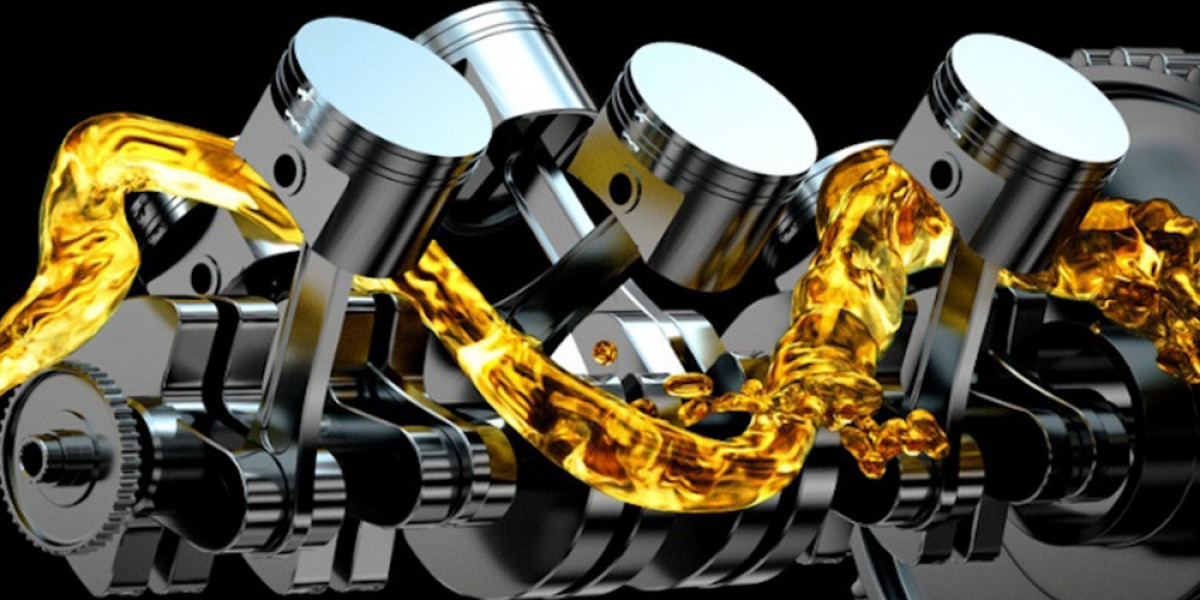What are Lubricants?
Lubricants are viscous fluids that are used to reduce friction between surfaces that are in contact while moving. They are essential components for the smooth functioning of machines, tools, vehicles and other equipment. Lubricants play an important role in reducing wear and tear of components by diminishing friction between surfaces.
Types of Lubricants
There are various types of lubricants that are commonly used for different applications based on their formulation, thickness and other properties. Some major types are:
Mineral Oil Lubricants
Mineral oils are one of the most commonly used types of Lubricants derived from crude oil. They are inexpensive, have good corrosion protection and thermal stability. Mineral oils are used extensively as automotive engine oils, hydraulic fluids, machine oils and industrial greases. Their drawback is poor biodegradability.
Semi-Synthetic Lubricants
Semi-synthetic lubricants contain a proportion of both mineral oils as well as synthetic base stocks. They are engineered to offer improved properties over conventional mineral oils such as better low and high-temperature performance. Automotive transmission and gear oils often use semi-synthetic formulations.
Synthetic Lubricants
Synthetic lubricants are manufactured completely from chemical compounds instead of being refined from crude oil. They can withstand higher temperatures and have superior oxidation stability and low evaporation compared to mineral oils. Synthetic lubricants are used where extreme conditions are present, like jet engines, industrial gears and automatic transmissions.
Bio-Based Lubricants
In response to growing environmental concerns, lubricant manufacturers are developing bio-based and biodegradable lubricants derived from natural and renewable sources such as plant oils and fats. While plant-based lubricants still have limited performance compared to petroleum and synthetic options, they are gaining popularity in applications like food processing and household machinery.
Industrial Lubricants
Industrial applications involving heavy duty machinery depend on specialized lubricants for reliable operations. Turbine and compressor oils, hydraulic fluids, metalworking fluids, transformer oils, gear oils and greases provide protection under high loads and temperatures encountered in sectors like power generation, heavy equipment, mining, steel, cement, oil & gas industries. Formulating lubricants for industrial use presents unique challenges compared to automotive/commercial applications due to more severe conditions.
Automotive Lubricants
The automotive industry has been a major driving force behind lubricant innovation. Cars, trucks, buses, construction equipment and other vehicles utilize several lubricants to keep engines, transmissions and other components running smoothly. Some key automotive lubricants include:
Engine Oil
Engine oil or motor oil is the lifeblood of internal combustion engines used in vehicles. It lubricates moving parts, reduces friction and protects engine components from corrosion and wear. Choosing the right viscosity grade and specifications of engine oil is crucial for optimum performance and durability.
Transmission Fluid
Automatic and manual transmissions contain specialized hydraulic fluids that transfer power from the engine to wheels via complex gearing systems. Transmission fluids are formulated to provide the necessary lubrication and cooling in high shear conditions within a transmission.
Gear Oil
Used in rear differentials and other gearing systems in vehicles, gear oils have excellent extreme pressure and anti-wear additives to protect gears from damage caused by shock loads. They play a vital role in the durability of drivetrains.
Power Steering Fluid
This hydraulic fluid pressurizes power steering components to aid vehicular maneuvers. Power steering fluids are engineered to work under high pressure conditions while being compatible with other automotive fluids.
Greases
Greases are thickened lubricant formulations ideal for applications requiring lubrication and protection at static points. Automotive greases are used at suspension joints, chassis fittings, wheel bearings and other locations prone to friction with little or no motion.
Role of Additives
Lubricating oils and greases are seldom used in their base form. Additives are chemical components added in minute quantities to improve numerous properties and performance capabilities. Some vital additive types are:
Detergent-Dispersants
Keep engines clean by preventing sludge and deposits. They neutralize acids formed from combustion and keep particles suspended in the oil.
Anti-Wear Agents
Form protective films on metal surfaces under heavy loads to prevent scuffing and wear. Common anti-wear agents include ZDDP.
VI Improvers
Oxidation inhibitors that extend the useful lifetime of lubricants by slowing degradation. Also control deposit formation.
Corrosion Inhibitors
Prevent rust and corrosion of internal engine parts by forming protective outer layers. Important for ferrous and non-ferrous metals.
Friction Modifiers
Help reduce power lost due to drag and fuel consumption. Common friction modifiers include molybdenum-containing compounds.
Pour Point Depressants
Lower the temperature at which lubricants solidify and stop flowing freely, vital for cold starting capability.
Foam Suppressants
Keep oils from foaming under high speed agitation conditions in engines and hydraulic systems.
Anti-Aging Agents
Prolong oil service life by denaturing oxidation by-products and improving thermal and chemical stability.
Choosing the Right Lubricant
With so many lubricant options available for different applications, it is important to select products formulated specifically for the machinery, equipment or vehicle in question. Consulting technical data sheets and manufacturer recommendations can help determine the suitable lubricant type, specifications, viscosity grade and service intervals. Proper lubricant selection and maintenance are keys to maximizing performance while protecting costly assets from premature wear.
Get More Insights on — Lubricants Market
Check Report in this language
· Japanese
About Author:
Vaagisha brings over three years of expertise as a content editor in the market research domain. Originally a creative writer, she discovered her passion for editing, combining her flair for writing with a meticulous eye for detail. Her ability to craft and refine compelling content makes her an invaluable asset in delivering polished and engaging write-ups.
(LinkedIn: https://www.linkedin.com/in/vaagisha-singh-8080b91)










